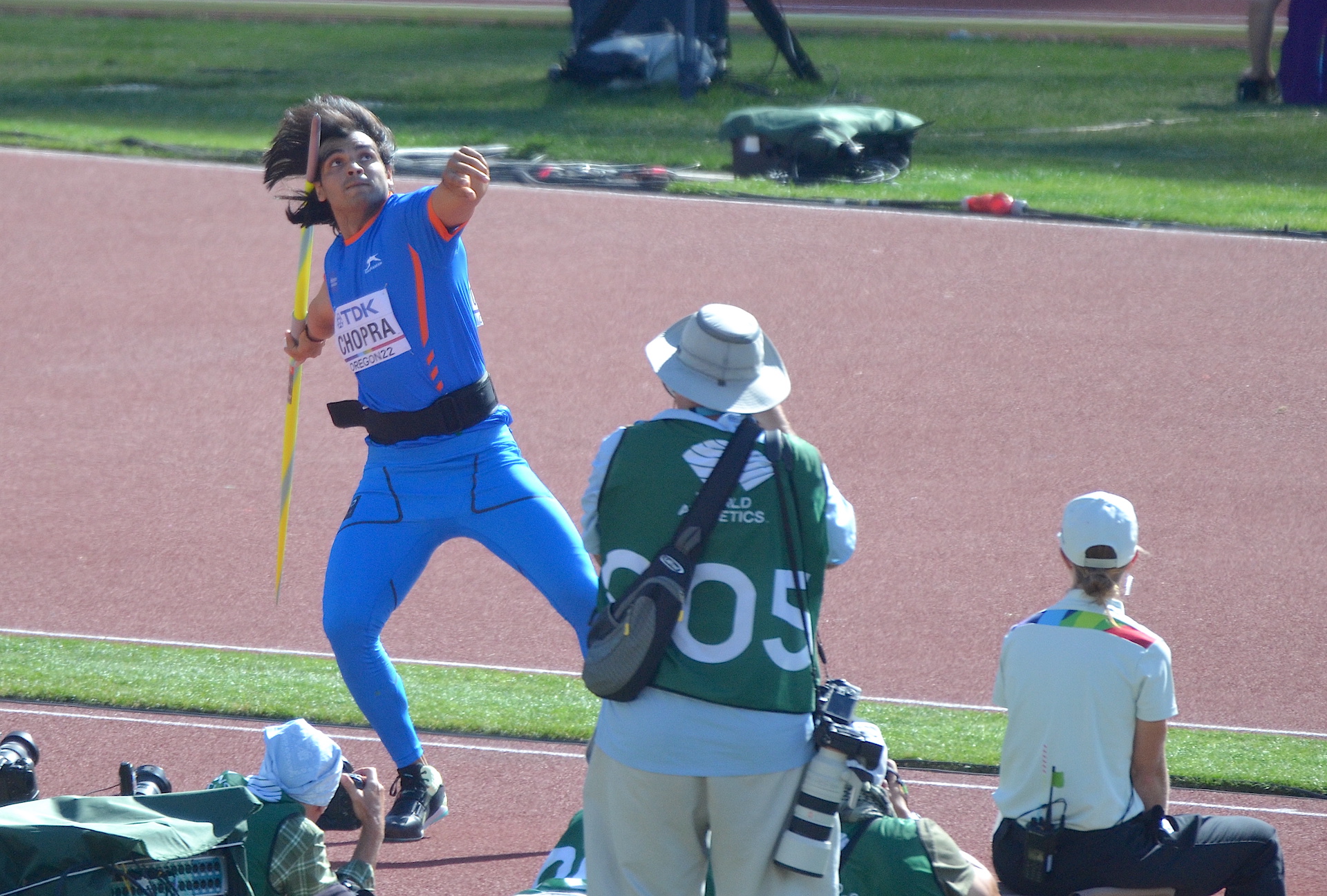If one were looking for an all-encompassing solution to gender-related cases in international sport, the Tapsee Pannu-starrer Rashmi Rocket does not offer any. It is but another example of Indian film industry’s ability to ride the crest of sport and desire to highlight issues that often come along, but without understanding or addressing their intricacies.
It may not be necessary to get into such a debate since two warnings flash on your screen even before the film gets rolling.
The first – “All stories, characters, places, events, incidents, scenes of the program are purely imaginary and fictional…” – lasts three seconds. And the second, lasting 10 seconds, reads: “The film is inspired by true events, no scenes are to be construed to represent a true or accurate recreation or depiction of any real or actual event that has transpired.”
Be that as it may, the film tickled my interest. I wanted to see how a tough subject would be handled. To begin with, the choreography of the athletics scenes is disappointing, even amateurish. After all, the Hindi film industry has set high standards over the years when depicting scenes in sport – be it in training or in competition.
There can be no such complaints against key actors.
Tapsee Pannu, despite not being the most sprinter-like in the athletics scenes, did a fine job of portraying the emotions that surface in Rashmi Vira when asked to sit out of competition because of regulations in force. Abhishek Banerjee’s depiction of her lawyer Eeshit Mehta catches the eye. Supriya Pathak as Rashmi’s mother Bhanuben Vira and Supriya Pilgaonkar as Justice Savita Deshpande live their roles admirably.
Yet, perhaps, Rashmi Rocket’s larger purpose is not to showcase the sport itself but to highlight the gender test as a violation of human rights. So let us focus more on the handling of that sensitive aspect. The film has used the term ‘gender test’ quite loosely without realising that the International Olympic Committee abolished gender testing at the end of the 20th Century.
International sports bodies have always found it ‘reasonable’ to divide athletes into male and female categories. And draw up some regulations to enforce the divide. Around the world, sports administrators have been concerned about some female athletes drawing advantage from levels of testosterone that far exceed those of females and match those of males.
Introduced in the 1968 Winter Olympics in the French city of Grenoble, gender testing was scrapped after the 1998 Winter Olympic Games in Nagano, Japan. The International Association of Athletics Federations (IAAF) Regulations Governing Eligibility of Females with Hyperandrogenism to Compete in Women’s Competition came into force in May 2011.
IAAF made it clear then that no female with hyperandrogenism would be permitted to compete in the female category of an international competition until her case has been evaluated by IAAF in accordance with those regulations. These regulations were applicable only to international competition and never barred athletes from competing in domestic events.
The crux of the events of 2014 in India was about Hyperandrogenism and the levels of testosterone in one athlete. Hyperandrogenism is a term used to describe the excessive production of androgenic hormones, such as testosterone or androsterone, which control the development and maintenance of masculine characteristics.
Rashmi Rocket wants the viewer to believe that the test in 2014 was ordered by the administrators of track and field sport because of international regulations. In fact, it was the Ministry of Youth Affairs and Sports which issued a Standard Operating Procedure (SOP) in March 2013 to identify circumstances (female Hyperandrogenism) in which a particular sportsperson will not be eligible to participate in competitions in the female category.
The SOP said in so many words that the medical examination would not amount to a gender test. It also specified that such an athlete, rendered ineligible to compete as a female, would be eligible to compete as a male, provided he qualifies. Also, it insisted that no athlete would be barred from participation in female category till the medical investigation was complete.
On February 20, 2015, even before the Court of Arbitration for Sport (CAS) heard the Dutee Chand vs Athletics Federation of India and IAAF case, the Ministry withdrew its SOP. It was a fait accompli as the then Sports Authority of India Director-General Jiji Thomson had decided to support Dutee Chand in the fight against the IAAF Regulations.
Since then, it has not been possible for any National Sports Federation to subject any athlete to tests for Hyperandrogenism.
Speaking of Hyperandrogenism, in the fictional story (drawing from true incidents) in which Rashmi Vira is said to have failed a gender test, it is most surprising that she is shown as becoming pregnant. Cinematic license? Perhaps not. It is possible for persons with DSD to get pregnant, but that is a rare story that has not been heard of in the world of Indian sport.
Filmmakers find India’s sports administration a favourite villain to exploit. If one film portrayed a coach being locked up in a room during the Commonwealth Games in Delhi, this one makes the viewer lean towards believing that gender testing (mixed up for Hyperandrogenism) is/was conducted because of jealousy and nepotism.
And, while it is little known, it is true that Jiji Thomson appointed researcher and eager activitst Dr. Payoshni Mitra to act as mediator and consultant for Dutee Chand. Dr. Mitra was able to mobilise international support, international and domestic media support. She even provided evidence as witness for the athlete before CAS.
It is the CAS not in a High Court in India that dealt with the IAAF Regulations as the film’s script suggests. There was no need for anyone to approach the High Court to strike down the Ministry’s SOP as it was withdrawn. Yet, so long as the SOP was in vogue, all National Sports Federations were bound to follow it.
Expectedly, Michael Phelps’ long limbs and Usain Bolt’s extra fast-twitch muscle fibres spring up during the arguments. Virender Sehwag’s eye-hand coordination and Sachin Tendulkar’s timing also find dramatic mention. The arguments ignore the fact that all examples cited are male and that there is no international restriction on competing in the male category.
The filmmakers find it easy to play to the gallery, raising a question but without offering a viable solution. More importantly, they shine only a feeble light on the right of the other female athletes to be in fair competition. Of course, there can be no denying that the rights of the female athletes need to be protected.
But should they be competing with athletes with DSD?
That is a question that CAS answered in the negative on April 30, 2019, accepting World Athletics’ view that females with DSD cannot compete in events ranging from 400m to the mile. The Swiss Federal Court also answered that in the negative on August 25, 2020, dismissing Caster Semenya’s appeal against the CAS order.
Caster Semenya has now moved the European Court of Human Rights complaining that there has been a violation of her rights – Prohibition of inhuman or degrading treatment, Right to respect for private life and Prohibition of discrimination besides breach of Right to a fair hearing and Right to an effective remedy.
Quite evidently, all this was beyond the purview of Rashmi Rocket, aimed to entertain and provoke thought but not charged with the task of offering updated information.
Image used for Representation Purposes only.



